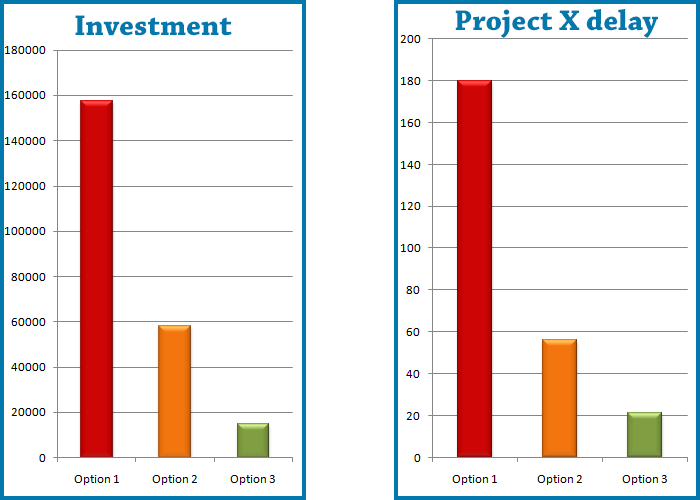A leading Telco provider
The customer is running a huge Teradata Enterprise Data Warehouse with 3 layers: Stage, Core and Reporting layers. With business growing and large amount of regulatory historic data to be kept and maintained, the data warehouse is quickly running out of the reserves. Consequently, the performance is significantly degraded and nightly ETL batch rarely finishes before 10am. With BAU and ongoing change management barely fitting in, a new large-scale project called Project X arrives on the scene. This project covers the integration of a brand new source system, which has been acquired as a result of a merger with another small Telco company.
In order to get rid of the present limitations and ensure smooth performance for the next 12 months, 10% of the total DWH space have to be recovered. To accommodate Project X and allocate sufficient space reserves for next 12 months, another 8% of the total space have to become available.
Option A: The customer can purchase new DWH (upgrade) with higher capacity and better performance. The size of the investment is 524k EUR (proportional amount corresponding to the strictly necessary space required as above is 158k EUR) and the new DWH can be supplied and migrated in 6 Months. The standard change management will not be impacted and stakeholders will be notified that some of the critical applications will until the migration be finishing late in the morning. Project X is postponed for 6 months.
Option B: The customer can decide to optimize existing structures in the data warehouse manually and notify the HR department about newly opened positions. The size of the investment is 58k EUR and HR department estimates it will take about 4 weeks to find human resources or a contractor with the appropriate skill set. The analyst recons another 4 weeks are necessary to carry out the task. The Project X is postponed for 8 weeks.
Option C: The customer can use tool for automated optimization, which could be deployed within 2 weeks. The first set of required savings will be available within a week and the size of investment is 15k EUR.
The customer opted for Option C; ATO tool was successfully deployed and configured to scan all tables bigger than 50GB in both Stage and Core layer.
During the first week ATO identified the worst 30 tables and proposed changes, which saved 12% of the total DWH capacity. Project X has been kicked off with a minor delay and standard change management was not impacted at all. The supplier’s specialist predicted that the tool can recover an additional 15% over the next 3 weeks. The ATO will also become part of the standard deployment process to reduce the size requirements for tables created as part of the future projects.
